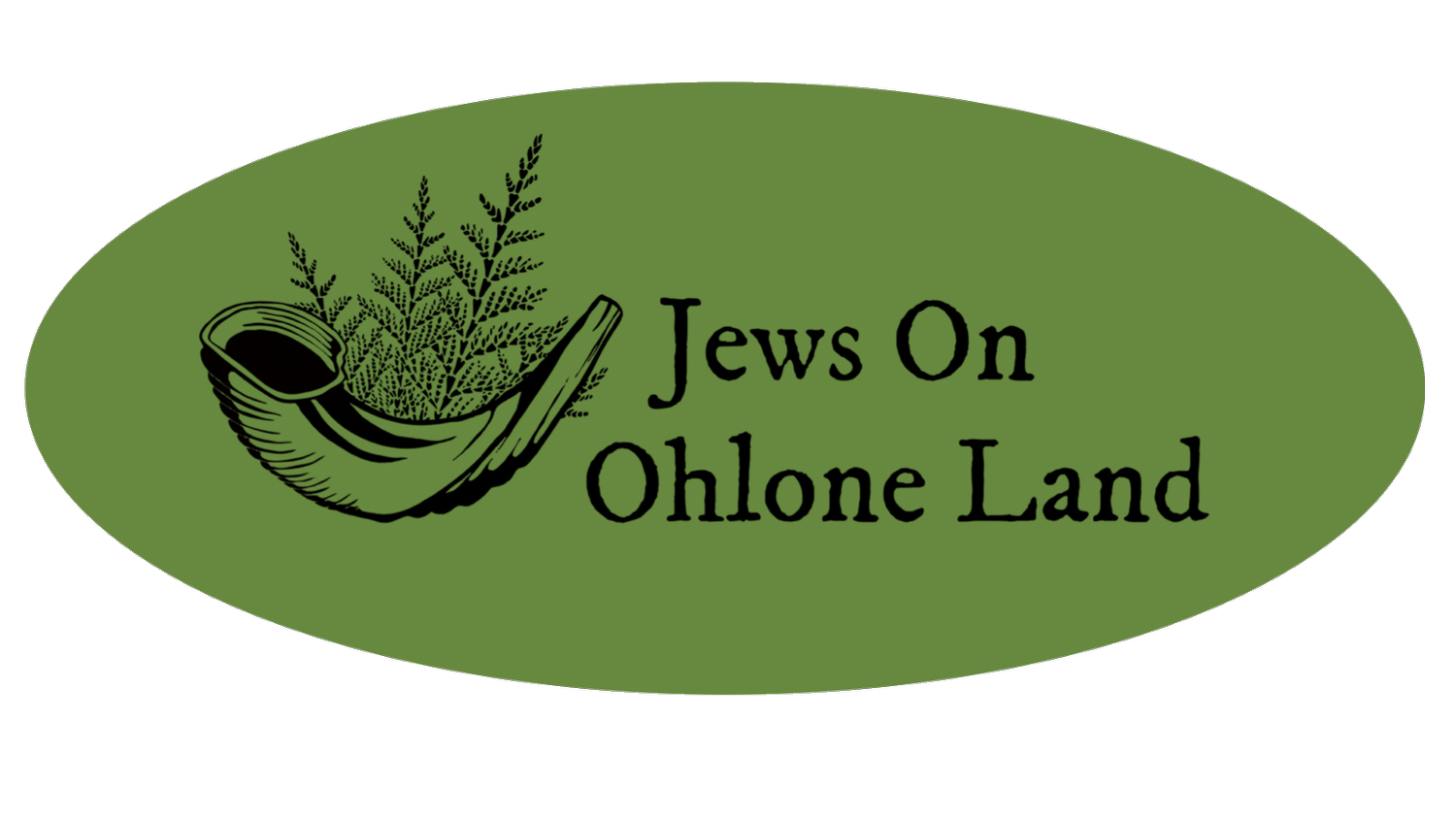The Acorn & The Matzah
by Rabbi Dev Noily
Two years ago Jews on Ohlone Land (JOOL) introduced the practice of adding an acorn to our seder plates to bring visibility and awareness to Indigenous people and land in our Passover practice. We wanted the telling of our Jewish ancestral story of liberation to resist the erasure of Indigenous stories, to honor the people and land where we live, and to support those of us who are not Indigenous in doing teshuvah / repair for the ways that we benefit from histories of colonization and genocide.
The acorn on the seder plate asks how our ancestral story is reflected in, and contrasted to Indigenous experience, how our liberation empowers us and obligates us as accomplices in rematriating the land where we live, and what it means to live as good guests here.
Most of the seder plate’s occupants are “right now” foods - the matzah we just baked to eat on the run, the greens springing up from the earth, the “mortar” that has roughed our hands until tonight, the tears of grief we shed now for the generations of suffering and the tears of joy we shed now for the sweetness of liberation, and the bone or beet - a sign of the blood on our doorposts that spared us the final, tragic, incomprehensible plague of death.
But the acorn - it comes from as distant a time as the year can give. Acorns mature and drop to the ground in the fall, not long after the autumnal equinox. And here we are at Pesach, on the other side of the sun, not long after the spring equinox. So where will we find an acorn to put on our seder plate?
To have an acorn on our seder plate, we need to collect it, to be aware of Pesach, in the fall. While the traditional foods on the plate connect us to the immediacy and turmoil of right now, putting an acorn on the seder plate connects us to the stability of the repeating cycle of the year - equinox to equinox, solstice to solstice. Putting an acorn on the seder plate takes time - not hours, but months. And if you don’t have an acorn this year, you can use a picture, or maybe an oak leaf.
Since we began this practice, come fall when I see acorns on the ground or at eye level in the oaks, one of the things I think about is Pesach. What began for me as an honoring of our Indigenous hosts has become a gift of grounding and balance in a world overcome with upheaval and uncertainty. In this little acorn, I feel the comforting and generous embrace of our hosts, and I see with fresh clarity how all of our liberation emerges together, through our growing interconnection.
A core part of our spiritual practice is being present to what is true. We here in the Bay Area - for me, on the Lisjan Ohlone territory of Huchiun - stand on earth that has witnessed thousands of years of Indigenous life and culture, brutally disrupted in the short span of the last 250 years. To live here is to be called into a quiet that allows us to listen to the Indigenous voices of the past and the present, with humility and awe.
At the very beginning of our story of liberation, when Moshe Rabbeinu turned aside to look at the burning bush, the first thing the Holy One of Blessing said to him was, “Take off your shoes from your feet, for the place where you are standing is holy ground.” (Ex. 3:5)
We, too, are standing on holy ground. As we approach the season of our liberation, may we be fully present where we are. And may we be blessed to hold the continuity and the change, the grounding and the disruption, the acorn and the matzah.
Dev Noily is a co-founder of Jews on Ohlone Land, and serves as Senior Rabbi with Kehilla Community Synagogue in Piedmont.
JOOL Note: A drash is a teaching about the Torah that usually takes place in a synagogue. We are remixing that practice. In this digital space, JOOL members teach about the Torah of Jewish/Indigenous solidarity work. Individuals offer their perspectives on the questions and ideas that are moving through them. We hope it's a wild and sacred space. By lifting up different points of view, we practice our values of transparency, learning and relationship building. And we celebrate the diversity of our collective, where many different voices are joining together, connected through shared values, to call for Indigenous sovereignty.
